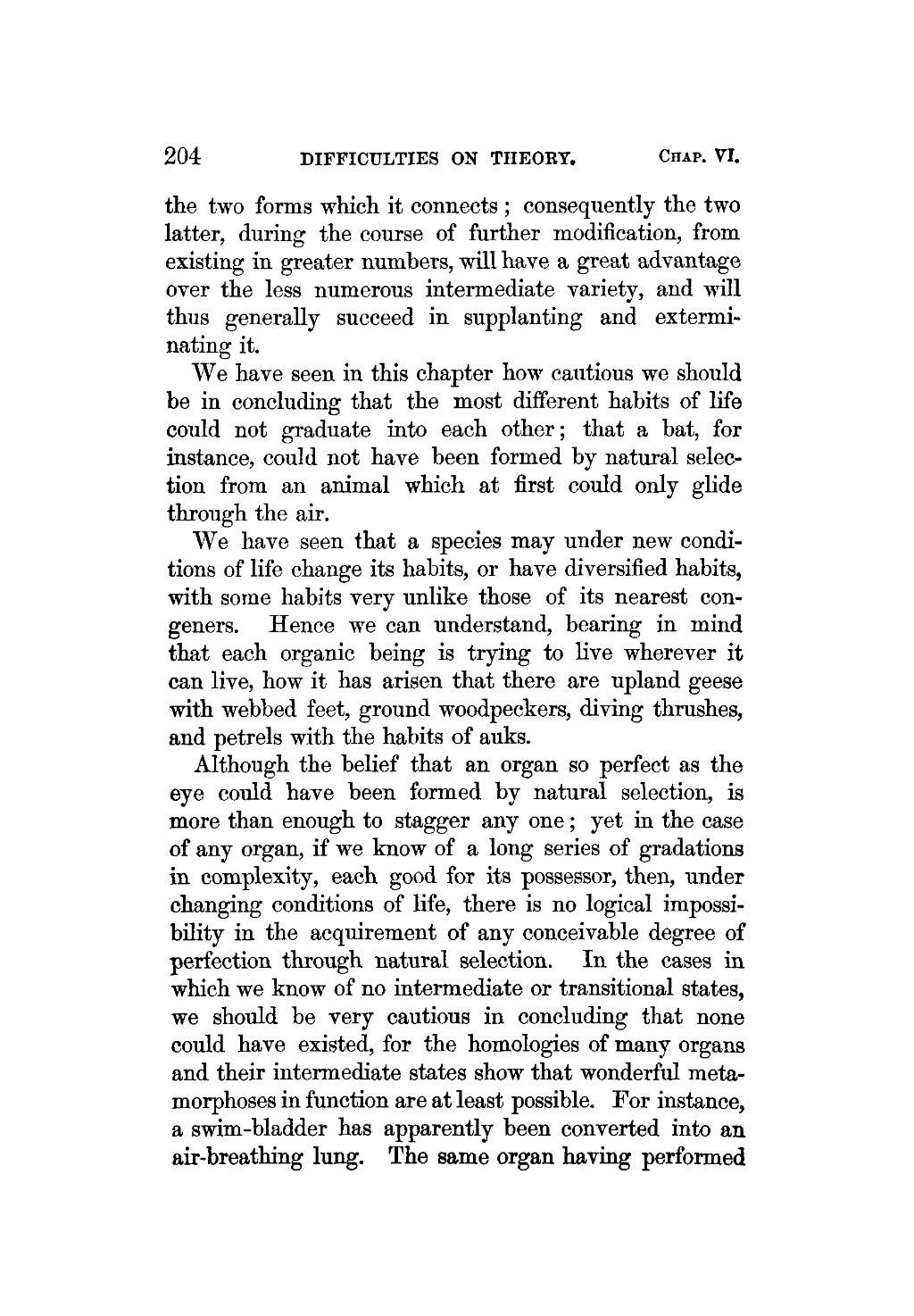the two forms which it connects; consequently the two latter, during the course of further modification, from existing in greater numbers, will have a great advantage over the less numerous intermediate variety, and will thus generally succeed in supplanting and exterminating it.
We have seen in this chapter how cautious we should be in concluding that the most different habits of life could not graduate into each other; that a bat, for instance, could not have been formed by natural selection from an animal which at first could only glide through the air.
We have seen that a species may under new conditions of life change its habits, or have diversified habits, with some habits very unlike those of its nearest congeners. Hence we can understand, bearing in mind that each organic being is trying to live wherever it can live, how it has arisen that there are upland geese with webbed feet, ground woodpeckers, diving thrushes, and petrels with the habits of auks.
Although the belief that an organ so perfect as the eye could have been formed by natural selection, is more than enough to stagger any one; yet in the case of any organ, if we know of a long series of gradations in complexity, each good for its possessor, then, under changing conditions of life, there is no logical impossibility in the acquirement of any conceivable degree of perfection through natural selection. In the cases in which we know of no intermediate or transitional states, we should be very cautious in concluding that none could have existed, for the homologies of many organs and their intermediate states show that wonderful metamorphoses in function are at least possible. For instance, a swim-bladder has apparently been converted into an air-breathing lung. The same organ having performed
